Amber Andrews (b. 1994 Antwerp, Belgium) graduated from the Royal Academy of Fine Arts Antwerp in 2016 and is represented by Ciaccia Levi Gallery in Paris and Gallery Sofie Van de Velde in Belgium. Her work combines elements of both abstract and figurative painting, by using color and medium to build layers. Often portraying scenes of everyday life, Andrews’ technique allow the viewer to see something familiar in a unique way.
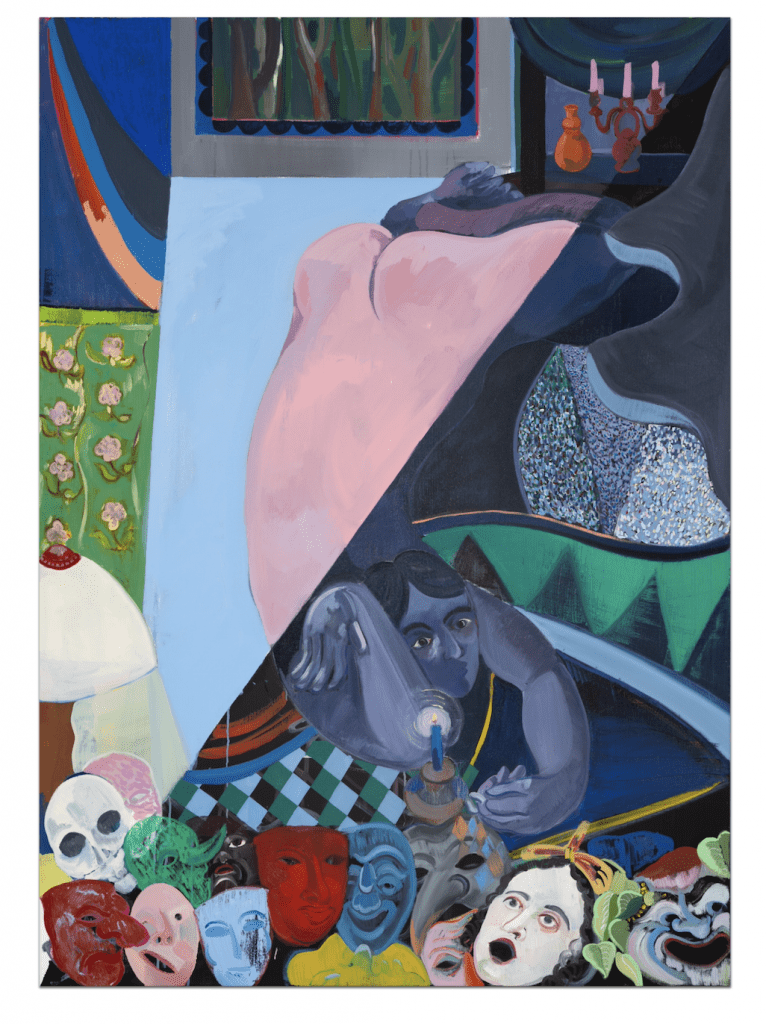
Tell us a little bit about yourself. Where are you from originally and when did art first enter your life?
I was raised in Kapellen, a typical Belgian village near Antwerp. Currently I’m based in Antwerp. I don’t really think art entered my life, it was in a way always part of my life. My Uncle/Godfather who’s a painter was studying at the Royal Academy of Antwerp when I was a baby. So I mostly grew up with only knowing his art. Going to his openings and having what I called “crafts day” with him and his wife who’s a sculptress. For me those days were golden. Starting the day in his studio surrounded with books of Manet I started with copying one of Manet’s flower vases. In the afternoon I visited my aunts studio to sculpt. If I think about myself as a kid I was always drawing. It was only by the age of 15 that it occured to me that I could do this forever and go and study arts.
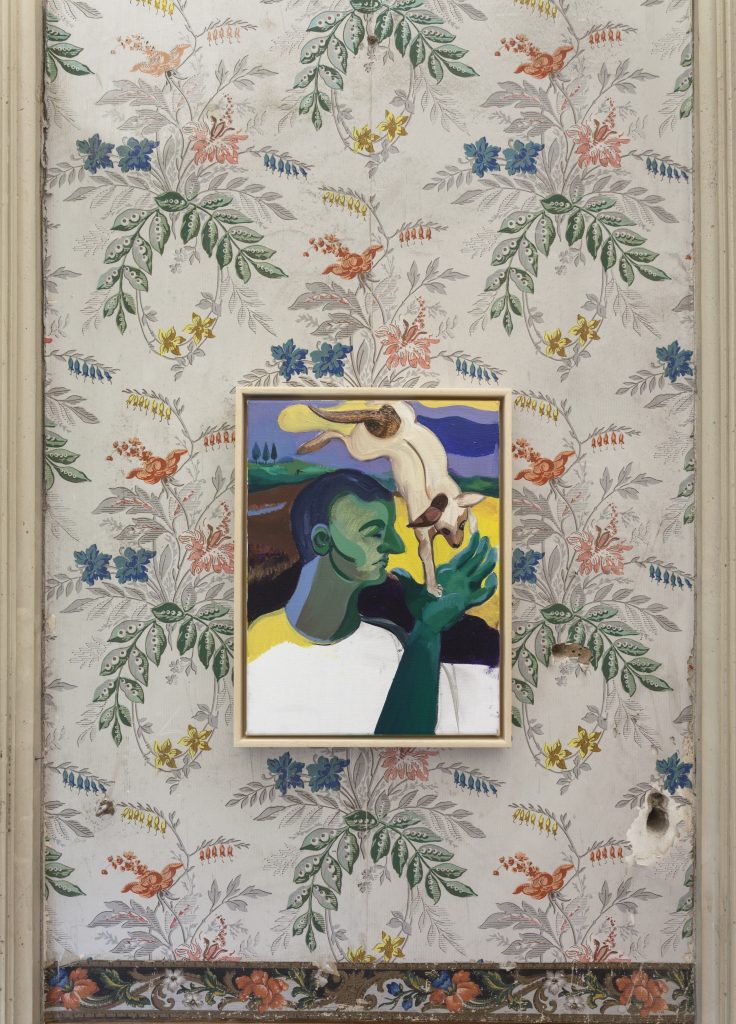
Has your work always taken on the style it currently embodies?
I don’t like to name it as “style” because it seems so final. Just another label so people can understand what you are doing. I feel my work is always changing in a way but you can also say it’s naturally evolving. Change is an important aspect for me, it means you’re constantly trying to see what’s best for your work. You don’t take your work for granted and take the same solution you had with the last painting. In the end each painting should learn me something. And if that learning process has to undergo a “style” change, so be it. But speaking about style I think my work always has had a figurative undertone and is even having so more and more currently. It’s taking a leading role for the moment.
What’s a day in the studio like for you?
It often starts by passing by a thrift shop buying stuff I don’t really need but knowing it would look perfect in my studio. So a good start of the day is by finding good stuff in the thrift shop, going to my studio replacing and adjusting the setting of my precious little things. Even just the act of replacing all these objects feels like a warm-up or kind of meditation to start my work. Once this is finished I just start painting. I barely sketch before I start painting. I always have an image in my mind. So I immediately commence with paint because I like to get rid of the white canvas as soon as possible.
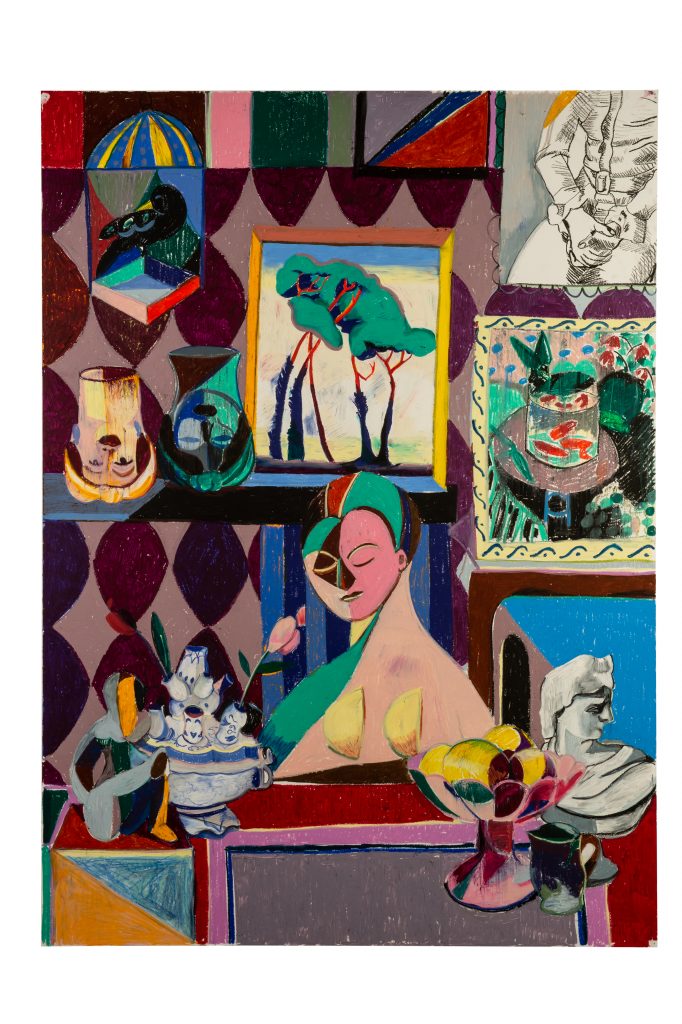
What’s next for you?
2021 was a very hectic period where a lot has happened for me. Upcoming projects will be for 2022. I’m working on a new solo show with my Antwerp Gallery “Sofie Van De Velde”. I also have other things coming up with my Parisian Gallery “Ciaccia Levi”.
From where do you draw inspiration?
My daily life is a huge inspiration especially my home. Like I said the bits and bobs I like to gather in my studio, I also do so at home and I’m not alone. My boyfriend does his own fair share, which means our house is packed with all sort of things. I used to have my studio in our apartment for over 2 years so you could always feel a sense of domesticity in my work. The objects that surround me in our household are playing a big role in my images and I feel I’m very much drawn to this domesticity in other artists work like Vuillard, Valloton, Manet… On the other hand, I’m drawn to color and I feel I’m very sensitive for it. I like to register from time to time colour combinations that I could see working for a painting. These combinations come from interiors or other paintings I’ve seen.
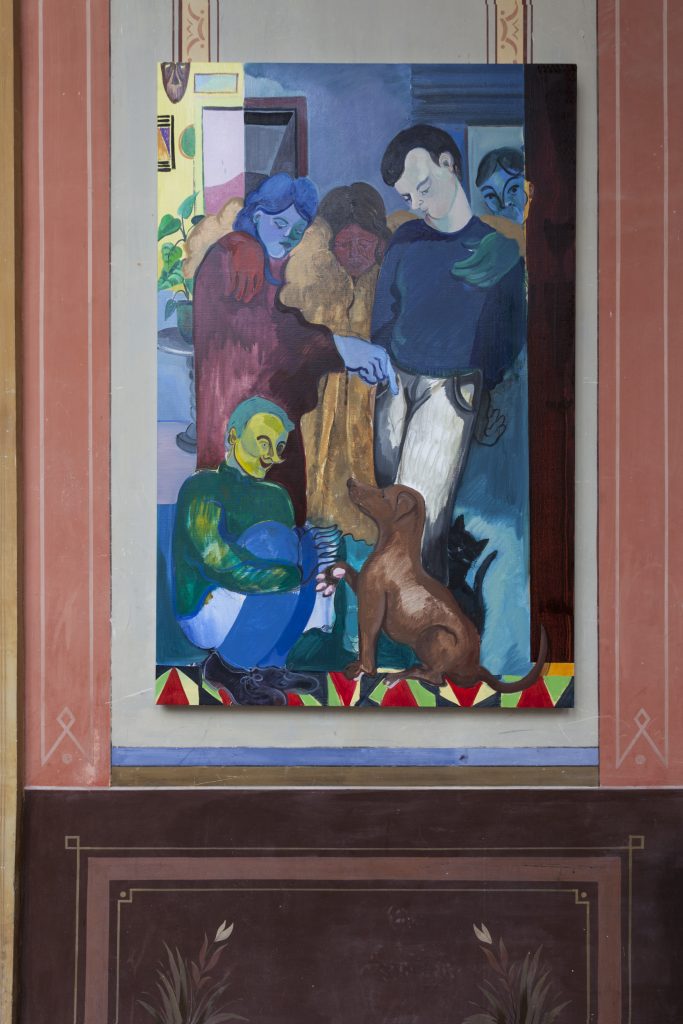
Have you always painted in the style your work currently inhabits?
I like to think so. I only think what has changed is the confidence. For example: before I would be afraid of painting a portrait or let’s say a classical approach of it. Because there is just so much you need to paint, two eyes, nose, mouth, hair, ears… Before I would give you a human silhouette with maybe two eyes and if you were lucky a nose, for me that was already enough to give. In my opinion you really need a lot of confidence to paint a portrait. Considering portrait painting has such a big history to it. In the old days you were only seen as a good painter if you were able to hand over a good portrait.
What source material do you base your work off?
From literally anything. It can be from a sentence that I read in a book to a film still, a song and of course art books. We do have plenty of them at home and I like to rage through them. And I really mean rage, the browsing goes so fast. In an instant I can see if the book contains what I need. Sometimes I’m only searching for a posture that I need or the way a hand is fragmented. I like to steal from renaissance painting and adjust the original. There is so much movement in these paintings, you can easily change it to your use.
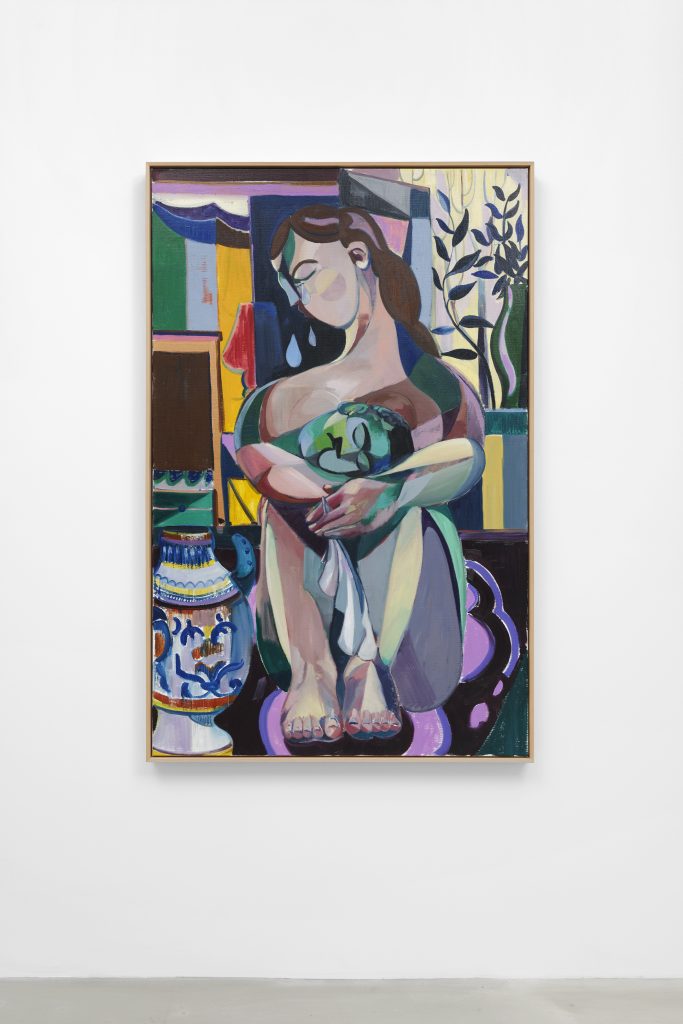
Does your work reference any Art Historical movements?
Yes absolutely, not one in particular but Art History is key to me. I’m always in dialogue with history. If from a pose I borrow or to a feeling that it can evoke. I like to play with it and move it to my hand. I can use these images because they already in a way have been digested. They’ve already made their point in History and the fact they’re still around us means they will keep making their point because it is so essential what they captured.
What is your process like? How do you begin a work?
I believe in just doing it without overthinking it. Most of the time I already know what I will be making or some sort of composition so it is important for me to just start and see what comes out of it. I don’t really like to sketch in advance because I’m always overdoing it, it always becomes a drawing and then it becomes something on its own. I rather sketch instantly on the canvas. This I often do with acrylics because they work quick. Time is very important in the beginning, it needs to go fast because I need to know if it will work or not. Lately I’m incorporating a lot of portraits into my work and they are totally made up. When I’m portraying a non-existing person it feels that everybody can portray themselves or somebody else in these characters. And for me it makes the exact distance I need. I do like to use some characteristics from people I know or even myself. I like to take pictures and I’m making a lot of them with my Iphone so I have created this databank just for my painting practice. These pictures will never be used literal but they can be used as a guide. At a certain point when I have assembled the painting it’s just the painting demanding what it needs and to stop in time.
At the end of every interview, we like to ask the artist to recommend a friend whose work you love for us to interview next. Who would you suggest?
Maybe very cliché to say or people might think I have to say this otherwise I don’t get food on the table, but my boyfriend (Tom Poelmans) is a great painter with great love for his metier. I’m always so surprised how he gets to his images and the way he approaches them.